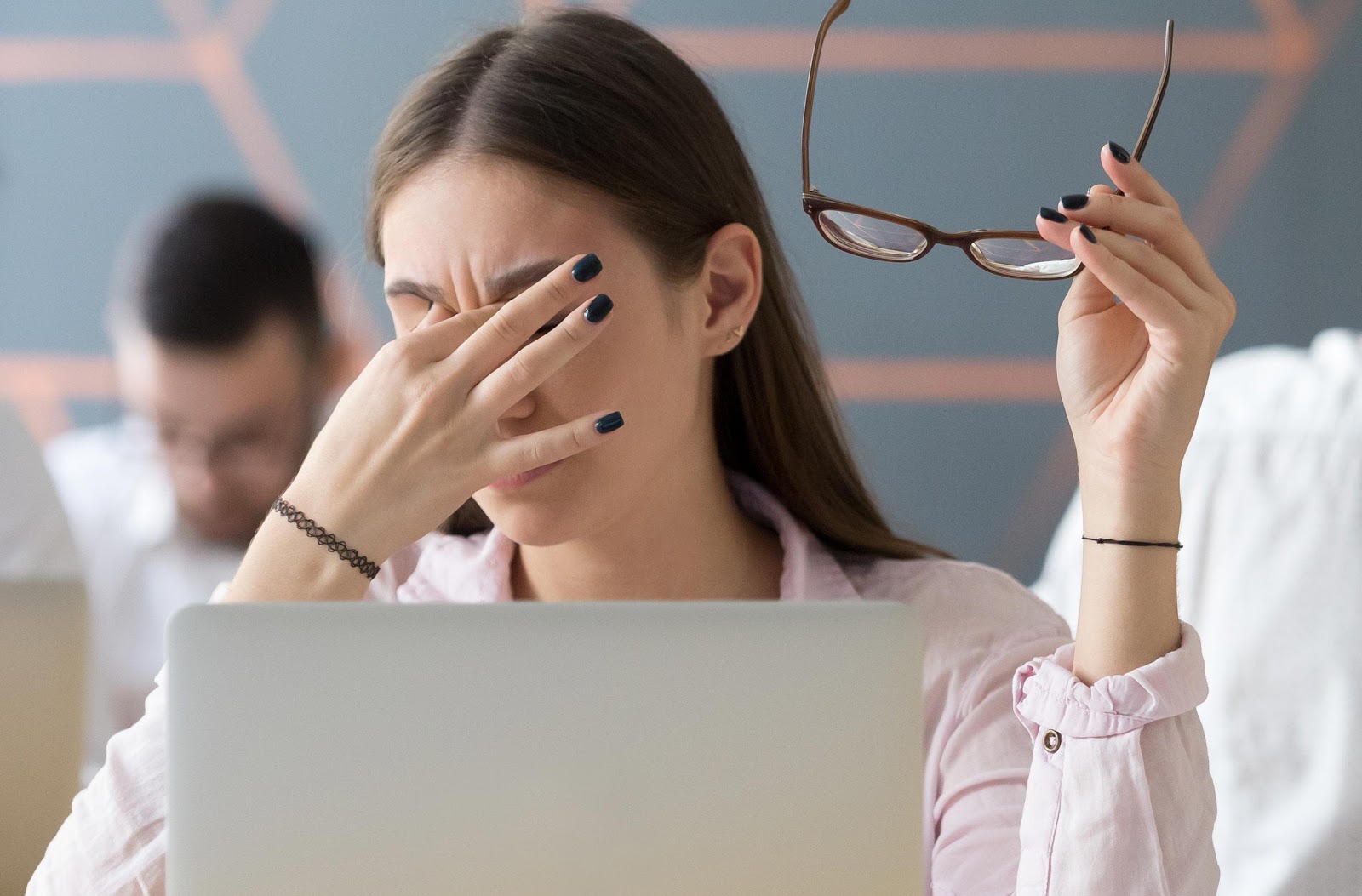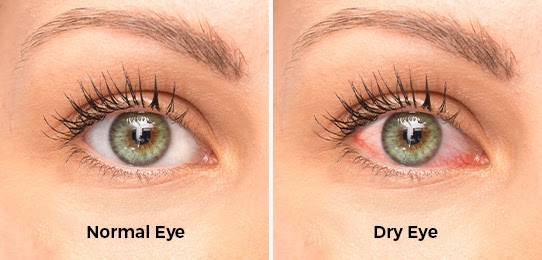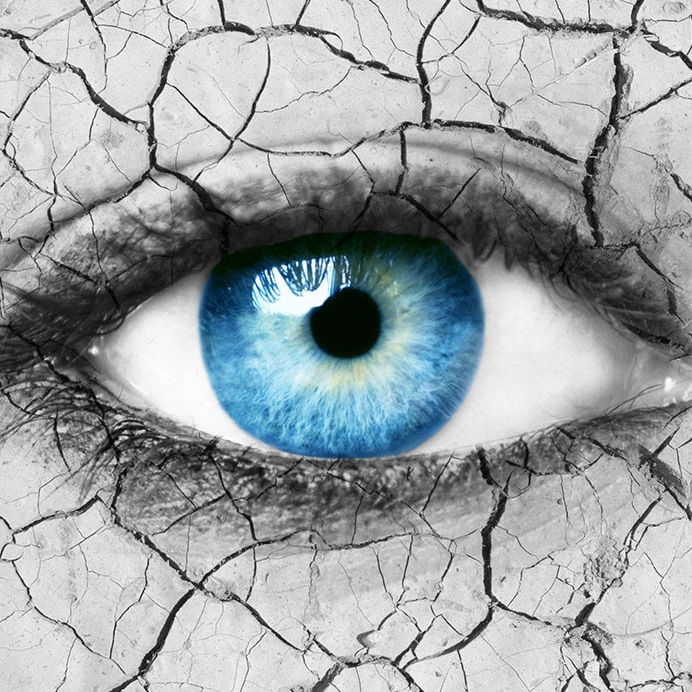Dry Eye (Dry eyes) may be temporary or chronic and occurs when tear glands do not produce enough tears or when tears evaporate too quickly. Tears keep the surface of the eye smooth, remove foreign substances, and help protect the eye from infections. Tears are essential for maintaining eye moisture.
Dry eye, which is often uncomfortable and painful, results from environmental factors or medical conditions. It may lead to complications such as double vision, bacterial infections, eye inflammation, and corneal ulcers. However, it never causes permanent vision loss. The most common symptoms of dry eye are burning, pain, and redness in the eyes.
What Are the Common Causes of Dry Eye?
1- Aging
Tear production decreases with age, and dry eye is commonly seen in individuals over the age of 50. This dryness cannot be entirely prevented, but regular use of artificial tears can help alleviate symptoms.
2- Medications
Tears are composed of oil, water, and mucus. Certain medications, such as antihistamines, antidepressants, diuretics, and beta-blockers (used to treat high blood pressure), can reduce mucus production and cause chronic dry eye.
Speak with your doctor about reducing the dosage or switching to alternative medications. Using artificial tears alongside medications can also help maintain eye moisture.
3- Computer Use
People who work with computers often suffer from eye strain and discomfort, and due to prolonged staring at the screen, they blink less frequently, which causes tears to evaporate quickly. To prevent dry eye, try blinking more frequently while working and take breaks to look at distant objects every 20 minutes to maintain eye moisture. Artificial tears may also help.

4- Laser Surgery
Some individuals experience dry eye after undergoing laser eye surgery. Cutting corneal nerves during the procedure reduces tear production. However, this dryness is usually temporary and resolves within a few days or weeks. During this time, lubricating eye drops can be used to maintain eye moisture.
5- Menopause
Hormonal changes play a role in dry eye, and women may experience symptoms during pregnancy, menopause, or while using birth control pills. Hormones stimulate tear production, and imbalances can reduce tear production. Hormone replacement therapy does not typically solve the problem, but using eye drops can help reduce irritation and dry eye.
6- Vitamin A Deficiency
Vitamin A contributes to eye health, and its deficiency can lead to dry eye and vision problems like night blindness. A lack of Vitamin A is diagnosed through blood tests, and Vitamin A-enriched eye drops may be prescribed. Foods rich in Vitamin A, such as eggs, carrots, fish, spinach, broccoli, and peppers, can also help.
7- Exposure to Wind
Cold weather and exposure to strong winds can lead to quick evaporation of tears and chronic eye dryness. To prevent dry eye in such cases, use lubricating drops or sunglasses that completely shield your eyes to protect them from cold and wind.
8- Sjögren's Syndrome
Sjögren's syndrome is an autoimmune disorder where white blood cells attack the salivary and tear glands, reducing tear production. Artificial tears or steroid drops are often used to alleviate symptoms. If eye drops are ineffective, surgical options may involve inserting silicone plugs into the tear ducts to stimulate tear production.

9- Other Autoimmune Diseases
Several autoimmune diseases, including arthritis, lupus, and diabetes, may reduce tear production and cause dry eye. Treating the underlying condition can help alleviate symptoms.
10- Blepharitis
Blepharitis occurs when small oil glands in the eyelids become blocked and inflamed. This condition can cause dry eye and the accumulation of oil around the lashes. While there is no specific cure, washing the eyelids with baby shampoo and applying warm compresses can reduce inflammation. If symptoms persist, a doctor may prescribe antibiotic eye drops.
11- Allergies
Allergies often lead to chronic dry eye. Other symptoms include watery, itchy, and red eyes. Oral antihistamines may reduce sensitivity, but in some cases, they can worsen dry eye symptoms.
12- Dehydration
Sometimes, dry eye is caused by dehydration and insufficient fluid intake. Other symptoms of dehydration include dark urine, low energy, dizziness, and rapid heartbeat. Drinking more water and increasing fluid intake can help relieve chronic dryness in the eyes.
13- Dry Air
Dry air and low humidity levels can lead to dry eye. Humidifiers help maintain air moisture levels, reducing tear evaporation.
14- Smoking
Smoking or exposure to smoke can cause dry eye. Quitting smoking, using nicotine substitutes, and avoiding smoke-filled environments can significantly improve symptoms.
15- Contact Lenses
Prolonged use of contact lenses reduces oxygen and moisture reaching the cornea, causing dry eye. Switching to long-wear lenses that help retain oxygen and moisture can help.
If your eyes remain dry, red, or painful for an extended period and home remedies do not improve the condition, consult a doctor. Dry eye can lead to complications such as infections, inflammation, or eye damage.
Sources: healthline.com, mayoclinic.org












Our Customers' Comments
No comments registered